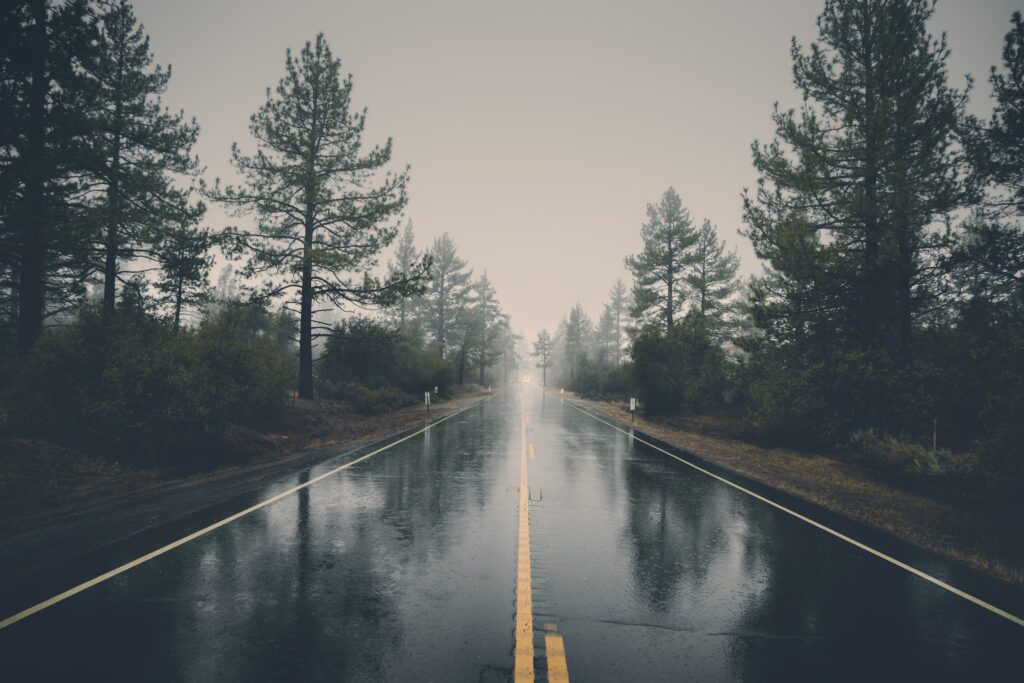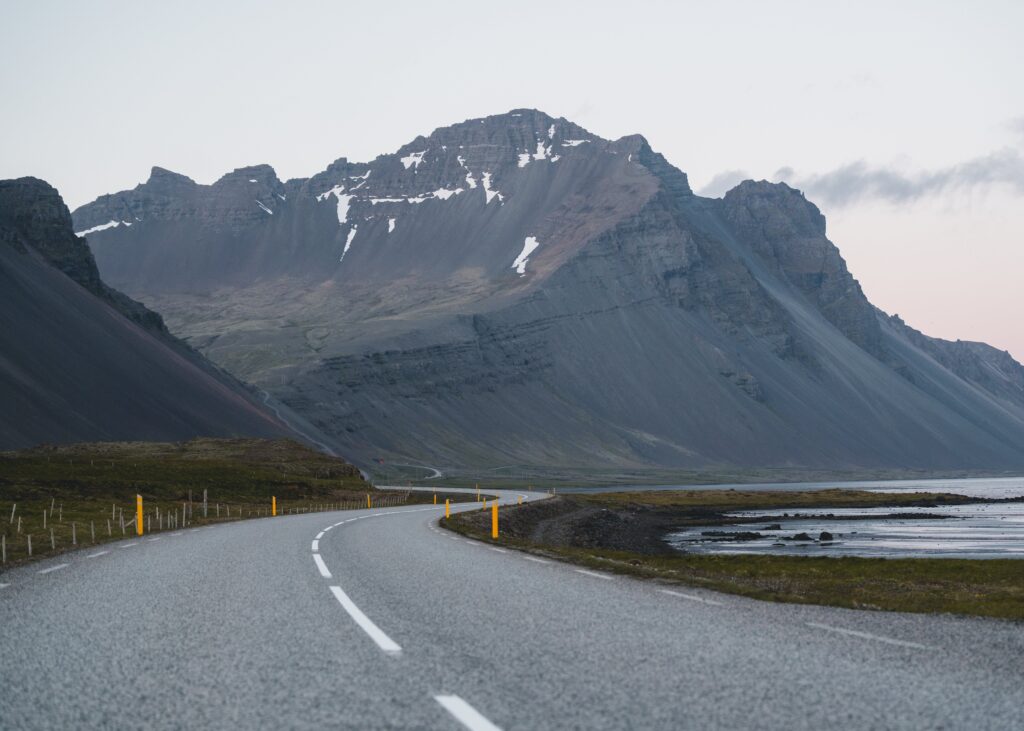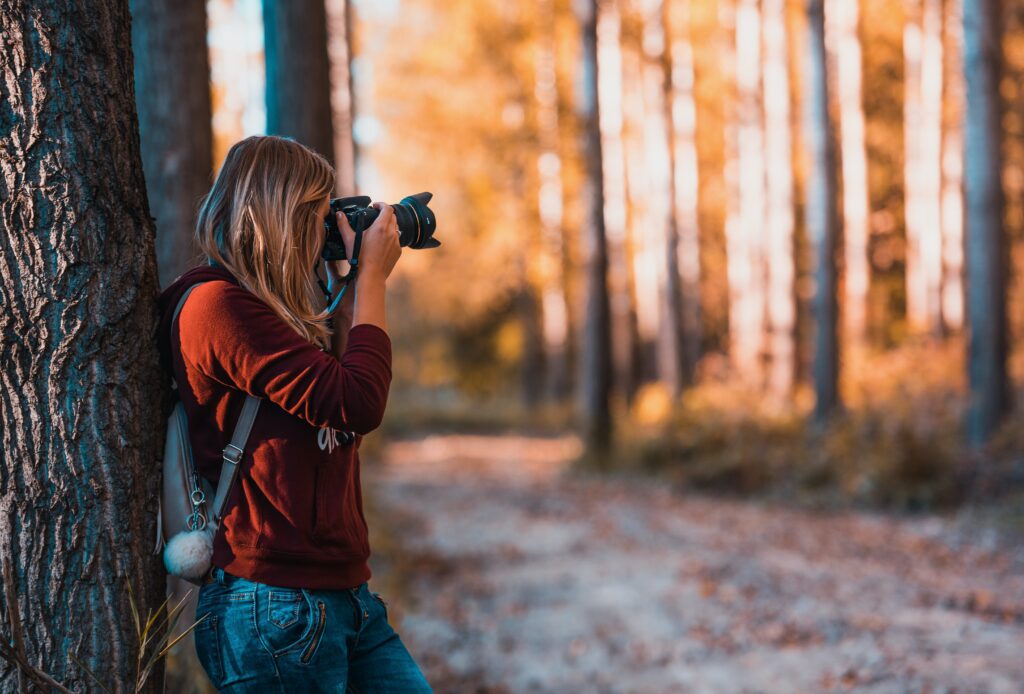Landscape photography is more than just capturing nature; it’s about saving the awe-inspiring moments found in wide-open spaces, from majestic mountains to serene lakes. Now, when we talk about composition, it is intentionally arranging elements within the frame. It’s the photographer’s skillful use of visual elements like lines, shapes, and textures to create a harmonious and visually compelling image. Let’s explore the top composition techniques to take your landscape photos to new heights.
Mastering Composition Techniques with Balancing Elements
Taking a great landscape photo is like putting together a colorful puzzle. It’s all about balancing the elements; the colors, shapes, and textures, to create a stunning picture.
The Rule of Thirds
The Rule of Thirds is a basic principle in photography and visual arts. Imagine breaking an image down into nine equal segments by two vertical and two horizontal lines, creating a grid. The idea is to place key elements of the scene along these lines or at their intersections. This technique helps create a more dynamic and visually appealing composition by avoiding placing the subject at the center of the frame. It’s a guideline that many photographers use to enhance the balance and interest in their photos.
The Visual Choreography with Leading Lines
Leading lines are a composition technique in photography where naturally occurring or artificially created lines are used to draw the viewer’s attention to a specific part of the image. These can be straight or curved elements like roads, rivers, or fences, directing attention toward the main subject. By using leading lines, photographers add depth to their images, leading the viewer’s eyes through the photo for a more engaging experience.


Pro tip: Experiment with various angles to find the leading lines that dance harmoniously through your lens.
The Role of Colors and Textures as Composition Techniques
Balance isn’t just about positioning; it’s about how colors and textures work together. Think of a lush green forest against a bright blue sky or textured rocks next to a calm lake – that’s nature’s color palette. Your job is to be the conductor, making sure no element stands out too much but works together harmoniously. The key is to let each part shine without overpowering the rest.
Utilizing the negative space
In a world cluttered with distractions, simplicity has a powerful voice. Negative space, found in both art and photography, defines the unoccupied areas around the main subject. This intentional use of emptiness isn’t about absence; it’s a strategic choice to emphasize the primary focus. By giving the main subject room to breathe, negative space not only enhances focus but also contributes to a harmonious and balanced composition.
How to Use Negative Space in Photography
Capturing Dynamic Skies and Weather Conditions
When it comes to landscape photography, the sky is your canvas, and the weather is your paintbrush. Capture the dynamic dance of clouds, light, and atmosphere. Explore crafting dramatic skies for impactful visual storytelling.
Cloud Chasing: Crafting Dramatic Scenes with Composition Techniques
Ever wondered how photographers capture those awe-inspiring stormy skies or the cotton-candy hues of a sunset? It’s all about being a cloud chaser. Have fun with stormy or fluffy clouds to add drama to your composition. Clouds are like nature’s special effects; embrace them and let your composition tell a weather story.
Composition Techniques for Harnessing the Golden Hours
Welcome to the golden hours—that magical time shortly after sunrise and before sunset. The sun casts a warm, golden glow, creating long shadows and adding a touch of enchantment to your landscapes. Position yourself to capture the play of light and shadow, turning an ordinary scene into a stunning shot.
Embrace the Elements: Rain, Mist, and Beyond
Don’t let a little rain dampen your spirits; use it to your advantage. Raindrops on leaves or mist over a lake can bring a magical touch to your composition. Weather conditions like fog, snow, or even a gentle drizzle add a unique texture to your shots. Be adventurous and embrace the elements; your camera can handle a little weather play!
Creating Depth and Scale in Vast Landscapes
Ever felt the challenge of capturing the vastness of a landscape in a photo? Let’s delve into the composition techniques that bring depth and scale to your vast and amazing landscapes.
Play with Foreground and Background
Imagine your photo in layers, like a delicious sandwich. Place interesting elements in the foreground, like rocks or flowers, and let the background showcase the expansive beauty. This layering trick adds depth, making your simple landscape more immersive.
Size Matters: Adding a Point of Reference
Ever snapped a photo of an endless field and wondered how to convey its magnitude? Introduce a point of reference – a person, a tree, or even a lone cabin. This helps viewers grasp the scale of your expansive yet simple landscape, making it more relatable.
Using Natural Elements as Composition Techniques
Use natural elements like arches, branches, or rocks to frame your vast landscape. This not only adds a touch of artistry but also draws attention to the grandeur beyond the frame. Think of it as Mother Nature helping you compose the perfect shot!


Post-Processing Tips to Enhance Landscape Composition
You captured an amazing shot, but guess what? There’s more magic waiting for post-processing to use composition techniques. Transform your photo from great to extraordinary!
Mastering Color Harmony and Elevating Composition Techniques
A composition that not only captures the scene but also conveys the emotional depth you experienced behind the lens. So, as you navigate the editing process, think of yourself as a color conductor. The choice of colors can evoke different emotions and moods. If you want to create a warm, nostalgic scene, enhance the golden tones of a sunset. Conversely, if you’re capturing a cool and tranquil lake, emphasize the serene blues.
Sharpness Matters when Utilizing Composition Techniques
Ever wondered how to make those mountains pop? Adjust the sharpness and clarity settings. Enhance the edges of rocks, trees, and mountains to bring out the intricate details. Think of it as giving your photo an extra kick!
Balance the Exposure
Nature loves playing with light and shadow, but your camera might not capture it all. In post-processing, balance exposure to reveal details in shadowy areas without washing out the highlights. It’s like giving your photo a perfect lighting makeover.
Embrace Filters
Filters aren’t just for Instagram. Graduated filters can balance a bright sky against a darker landscape, and polarizers can cut through reflections. Experiment with filters to add an additional touch to enhance your compositions.


As you explore landscape photography, think of your camera as a brush and nature as your canvas. Use these composition techniques to weave visual stories. So, grab your camera, connect with nature, and let your pictures speak your unique tales. Try these composition techniques on your next outdoor adventure.
If you have any inquiries, please put them in the comments section below. I’ll answer them in our upcoming blog post!
Happy Composing!






